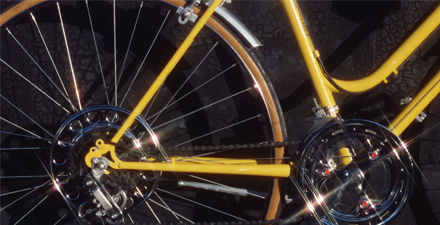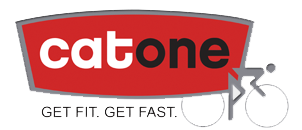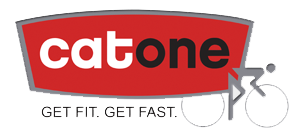
QFactor
Q-Factor
While the term “Q-Factor” may seem like the name of the latest Star Trek movie, it may actually be one of the most commonly overlooked adjustments when performing a bike fit. Q-factor is actually the lateral distance between the pedal mounting surfaces of your crank-arms, or effectively, the distance between your feet(stance width). In recent years, in an attempt to save weight, increase stiffness, and improve aerodynamics, bicycle bottom bracket and pedal axles have become shorter. Manufacturers have also released new “lower profile” versions of their crank-sets. For those with narrow hips, these changes allow one to get “narrower,” creating proper alignment and a more aerodynamic profile. Unfortunately for the non-narrow set, the human body simply hasn’t evolved fast enough to accommodate these equipment changes. While a “low-profile” crank or pedal may look cool on your bike, it may also be the source of your knee, hip, back, or foot discomfort.
If you’ve been on a group ride recently, or even if you’ve been watching the Tour de Lance coverage, you’ve probably noted the wide variance of pedals strokes in the peloton. Ideally, on a properly set-up bike, the head of the femur, the patella, and the second toe(2nd metatarsal head) should all be tracking in the same plane while pedaling. If your knees travel outside of that plane, chances are that you need to adjust some aspect of your position. When ones knees travel to the outside at the top of the pedal stroke, tight hips/glutes may be contributing factors, but insufficient Q-Factor is likely the cause. If ones knees appear to come in on the upstroke, or do the “high-jump” over ones top tube, typically arch supports or varus wedging are needed. Excessive Q-factor may also be the cause
Now that you’ve just dropped $500 on a set of trick carbon cranks, do you have to chuck them in the E-bay pile in favor of some mountain bike cranks? Probably not. Fortunately, a number of pedal manufacturers have incorporated Q-Factor adjustability into their pedal and cleat combinations. LOOK cleats have a small amount of lateral cleat adjustability, and their CX6 and CX7 pedals are some of the most adjustable pedals out there.


